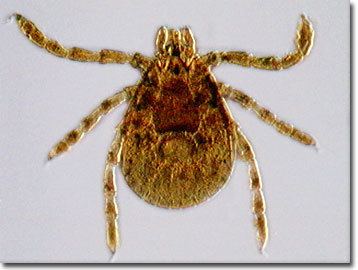Kingdom Animalia Subclass Acari Order Ixodida Scientific name Dermacentor andersoni Rank Species | Phylum Arthropoda Superorder Parasitiformes Family Ixodidae Higher classification Dermacentor | |
 | ||
Similar Dermacentor, American dog tick, Ixodidae, Amblyomma, Lone star tick | ||
Dermacentor andersoni, commonly known as the Rocky Mountain wood tick, is a species of tick. It can cause tick paralysis. This tick is well known as a vector of the Rocky Mountain spotted fever rickettsia in the northwestern U.S. and Canada, the Colorado tick fever virus, and the bacteria which causes tularemia (hunter's disease).
Diagnostic features:
References
Dermacentor andersoni Wikipedia(Text) CC BY-SA
